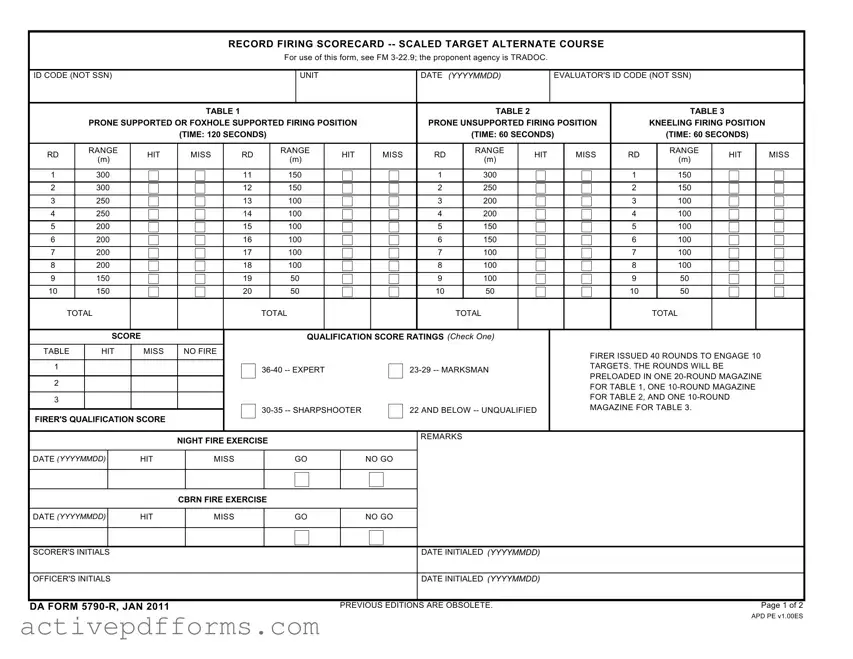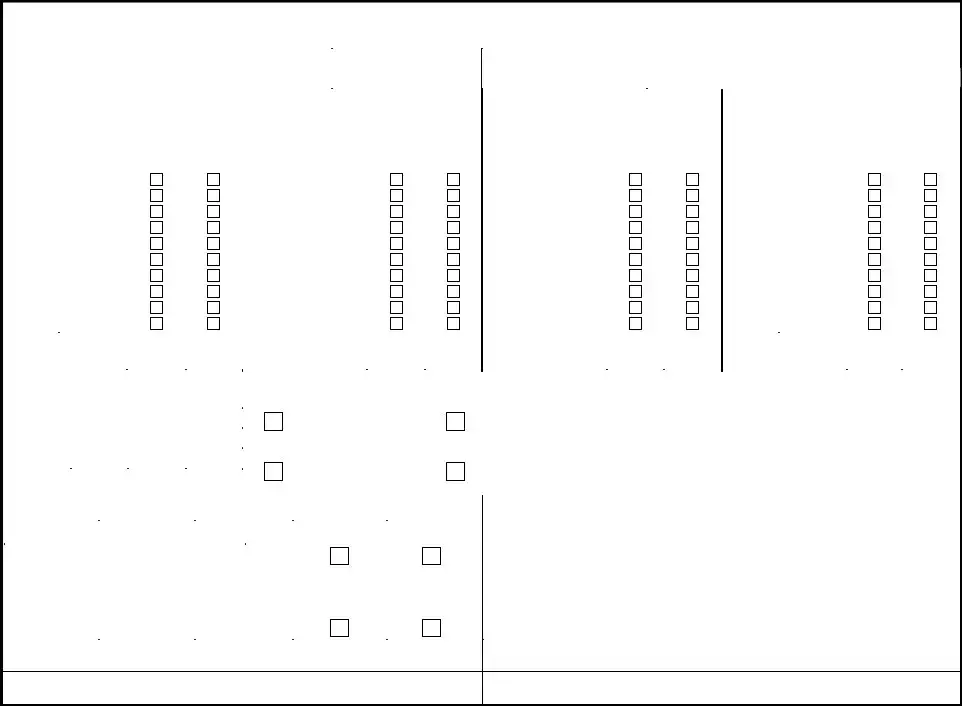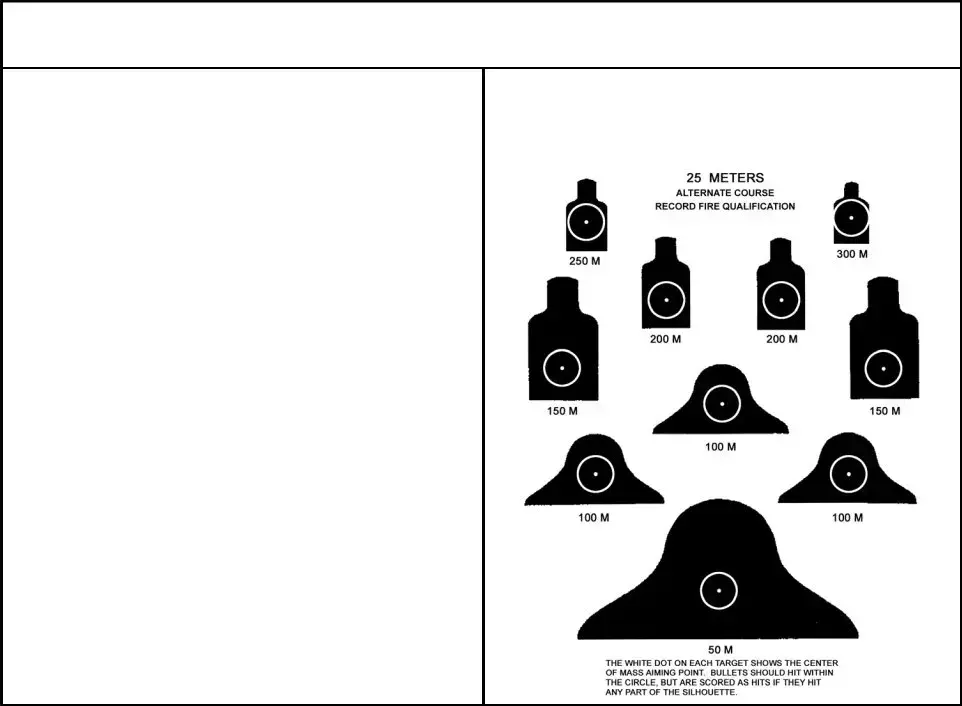CONDUCT OF FIRE
Alternate course qualification firers will have one 20-round magazine and two 10-round magazines. To ensure that firers do not forget which targets they engaged and shoot a given target more than the prescribed number of times, firers should adhere to the following guideline: Engage targets on the sheet from left to right and nearest to farthest. Engagement should follow this order: 50m, 100m left, 100m center, 100m right, 150m left, 150m right, 200m left, 200m right, 250m, and 300m.
Though the time between each firing position is not specified, enough time should be allotted to allow the firer to clear his weapon, quickly change firing positions, and reload before beginning the next firing table. The range RSO ensures that enough time is given between each change in firing position to facilitate the timely flow of the record fire qualification table.
(1)Table 1-- Prone Supported Firing Position or (at the unit commander's discretion) Foxhole Supported Firing Position.
The firer is given one 20-round magazine to engage 10 silhouettes on the same target sheet. Table 1 includes 2 rounds for each silhouette. Firing must be completed in 120 seconds. No more than 2 hits are scored for each silhouette.
(2) Table 2 -- Prone Unsupported Firing Position.
The firer is given one 10-round magazine to engage 10 silhouettes on the same target sheet. Table 2 includes 1 round for each silhouette. Firing must be completed in 60 seconds. No more than 1 hit is scored for each silhouette.
(3) Table 3 -- Kneeling Firing Position.
The firer is given one 10-round magazine to engage 10 silhouettes on the target sheet. Table 3 includes 2 rounds for each silhouette positioned at 50 and 100 meters and 1 round for each silhouette positioned at 150 meters. Firing must be completed in 60 seconds. No more than 2 hits are scored for the 50- and 100-meter silhouettes, and 1 hit is scored for each 150-meter silhouette.
SCORING
The same target sheet is used for every 40-round qualification table that a firer completes. One hit is awarded for each round that strikes within or touches some part of the silhouette. A maximum of 40 hits is comprised of 3 hits per target at 200, 250, and 300 meters; 4 hits per target at 150 meters; and 5 hits per target at 50 and 100 meters.


